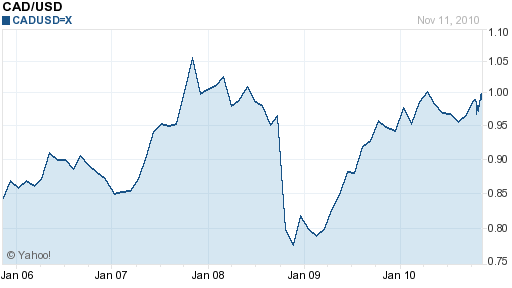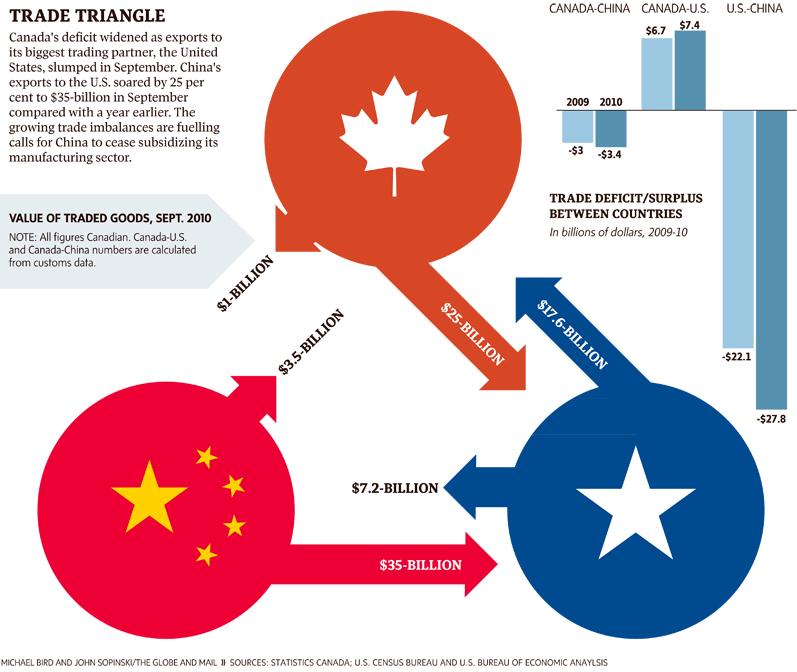
It’s not hard to understand what’s driving the Loonie; the weak Dollar. As the Fed embarks on further monetary easing (QE2), investors are nervous that all of these new Dollars will be deployed in a speculative – rather than productive capacity. Emerging market currencies are particularly popular, with commodity currencies, such as the Canadian Dollar, not far behind.
According to Bank of Canada Governor Mark Carney, “The outlook for the Canadian dollar… ultimately reflects the economic fundamentals.” While he has threatened to intervene if currency markets are “disrupted” (i.e. if the Loonie rises to an unreasonable level), past history and the tone of Carney’s remarks suggests that the Bank of Canada will remain on the sidelines for the duration of the currency war.
From where I’m sitting, the Canadian Dollar (as with the New Zealand Dollar, the subject of my previous post), don’t deserve to benefit from the speculative wall of money that is flowing out of the US. The Canadian economy is projected to grow by only 1% in 2010, and after adjusting for the contraction in 2009, it is still the same size as it two years ago. Not to mention that the Canadian government issued a record amount of debt to shepherd the economy through the recession.
Most worrying is that Canada’s trade deficit is nearing a record high, and on an annualized basis is now approaching $30 Billion a year. In addition, anecdotal stories suggest that Canadians are engaging in cross-border shopping and traveling abroad in great numbers to take advantage of relatively cheap prices. With the Canadian Dollar now at parity, these phen0omena are already becoming entrenched: “We would not anticipate much of an improvement in these trade patterns in the next couple of quarters,” said one economist.

The second observation is that currency markets are self-correcting, and that is especially true in the case of the Canada. As the Loonie rises, Canadian exports become less competitive, and consumers (sometimes physically!) start importing more. At some point then, the Loonie will reverse its decline, and the trade deficit will shrink.
However, if you drill deeper into the numbers, you can see that Canada is running a sizable trade surplus with the US. That means that the Canadian Dollar probably has room to rise further (or the Dollar has room to fall further), before the bilateral trade deficit would even close to narrowing. On a trade-weighted basis (perhaps against the Euro), the Loonie has few sources of fundamental support. For what it’s worth, analysts from CIBC World Markets seem to agree: they see the Loonie declining more than 5% over the next six months as the uproar over QE2 gradually fades, and the data shows that only a modicum of the newly printed US Dollars found their way into Canada.
Aucun commentaire:
Enregistrer un commentaire